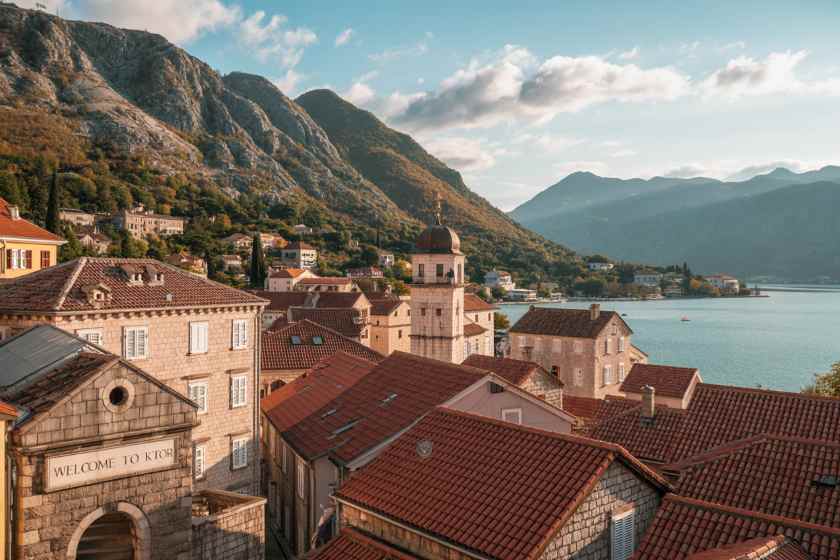Tourism Boom in Kotor: Cruise Ships Flood Popular Montenegro Town, Causing Strain
Kotor, Montenegro, faces challenges from overcrowding as cruise tourism surges, sparking concerns over environmental damage and the town's ability to manage the influx.
Kotor, a charming coastal jewel in Montenegro, has surged to the top of the Mediterranean cruise circuit, delighting ship passengers while leaving locals anxious. Every year, the fjord-soaked port wears the weight of hundreds of mammoth vessels, and the town council is hearing worried whispers from residents and green groups who dread both congestion and coastal degradation. Kotor is now wrestling with a delicate balance: keeping its spellbinding atmosphere while suddenly hosting a tidal wave of visitors.
The old town, already praised by UNESCO for its labyrinth of Venetian-era palaces and sky-hugging fortifications, invites admiration at every turn. Yet the growth of day tourism is beginning to fray edges that only a moment ago felt timeless. Sidewalk cafes fill to bursting, the narrow lanes often grind to a standstill, and aquifers that once fed the town now strain to keep pace. Beneath the glossy cruise brochures, shopkeepers, homeowners, and watchdog NGOs are asking whether the hundreds of thousands of day-trippers each season are rewriting Kotor’s future in a way that could hardly be reversed.
Kotor’s emergence as a must-see Mediterranean port town has been propelled by a steady stream of cruise ships arriving each summer. Nestled along Montenegro’s emerald Adriatic coast, the bay city offers an irresistible blend of medieval streets, soaring mountains, and serene sea—an ideal postcard-perfect pause for the fleets on their Mediterranean circuits. Coming ashore, the many-day visitors find the old town small enough to traverse on foot, historic enough to linger over, and lively enough to feel vibrant, so the mosques and churches, squares and cafés, fill with a small-army-sized crowd of newcomers eager to digest the layered stories of this once-indstable port and pirate strong-hold.
The flow of deck-and-hour-tour guests has translated into a small-town mini-boom for cafés, artisan shops, and guesthouses, each eager for the extra afternoon turnover. Street vendors sell embroidered hats and swarthy prosciutto, and bay-view terraces keep the champagne chilled. Revenues in the hospitality sector hit new records—and yet the boom has pressed against the seams of the medieval walls. Narrow alleys once quiet in the late afternoon run shoulder to shoulder with hats-on, selfie-clicking visitors. Waste management, water supply, and the quiet reverence long owed to cathedrals now juggle schedules and patina with the rhythm of the next arriving tender. City planners, lovers of both history and the living economy, now deliberate on how to protect the centuries of stone that have never known peak season, while the next season’s bookings keep ringing the ship’s bell.
Challenges of Overcrowding
Ever since visitor numbers began climbing, Kotor’s old town—tightly packed with winding lanes and age-old monuments—has felt the strain. On peak days the street can seethe with foot traffic, making it hard for residents to run errands and for the town’s low-key charm to cut through the din. Historic doorways that once framed the placid world of the townsfolk now frame selfie sticks and tour guide flags, the peace that once echoed between the stone walls overwhelmed by footfalls and speak-phones.
The peak season makes the strain unmistakable. Throughout the summer, multiple cruise ships can slide into the bay in a single tide, and by mid-morning the visitor count drifts far past the permanent population. Ticket booths can only stretch so far, benches and squares are strained the same way the seafront promenade already is, and the local baker needs six extra hands. When forecasts show several ships lined up the bay, the town braces—mixed with pride for the business and worry for the livability, aware that the balance tips with every extra boarding pass.
Environmental concerns
Alongside the problem of overtourism, the environmental toll of Kotor’s expanding tourism sector is becoming impossible to overlook. The sheer number of visitors is straining the town’s infrastructure and natural reserves; waste collection systems, water supply networks, and overall pollution are now critical topics. Conservation groups warn that Kotor’s delicate ecology could face lasting harm unless the flood of visitors is scaled back to levels the landscape can actually withstand.
The port area of Kotor has emerged as a focal point of the pollution debate. Discharges from the cruise ships—sewage, bilge water, and refuse—threaten the clarity and health of the Bay of Kotor, a recognised area of both scenic splendour and ecological sensitivity. There are parallel fears that the rising number of ships is worsening local air quality, as each vessel that berths emits smoke and particulate matter that linger over the town and surrounding hills.
Kotor’s local officials and tourism leaders recognize the pressures that the town’s growing popularity places on its streets and services, and they are actively seeking more mindful ways to handle the visitor surge. One option currently on the table is to cap the number of cruise ships that are allowed to berth on the same day. Moderating the arrival numbers in this way would ease congestion, lessen the load on local facilities, and help ensure that Kotor’s unique charm continues to draw travelers.
At the same time, there is increasing interest in fostering tourism that honors the area’s resources. Conversations are focusing on promoting eco-friendly excursions, upgrading pathways and services to handle visitors more gently, and introducing sound waste-collection and recycling schemes. By harmonizing visitor experiences with ecological stewardship, Kotor aims to create pockets of prosperity that nourish local jobs and conserve the town’s stunning setting.
Local tourism leaders in Kotor are now focusing on attracting a broader range of visitors who are willing to linger longer and engage with the town on a deeper level than the typical day-tripper. By highlighting the off-season charms and promoting the use of smaller, eco-conscious boats, the goal is to expand the tourism market while treading lightly on the landscape and the delicate bay.
Looking Ahead for Kotor’s Tourism
Kotor’s magnetic blend of history, culture, and breathtaking surroundings will keep drawing discerning travelers, yet the challenge is to safeguard its living heritage as visitor numbers climb. Developing sound systems for visitor flow, environmental protection, and resident welfare will be essential in shaping tourism that respects the town’s essential character.
Real progress will come only through cooperative dialogue among municipal leaders, local business, conservation groups, and the travelers who choose to come. By marrying informed oversight with a shared dedication to preservation, Kotor can continue to flourish as a vibrant cultural hub while the distinctive qualities that first captivated visitors are passed untouched to the next generation.
Conclusion
Kotor’s rise as a preferred cruise ship port presents a dual-edged sword for the region. The immediate boost to local businesses, markets and cultural sites is tempered by visible strain—from packed streets to rising sewer runoff in the Bay. Industry records show bumper months for visitors, yet residents report longer queues and quieter winters. Moving ahead, the town’s strategy must merge strict berth limits and staggered arrivals with conservation zones. Only then can the bay’s emerald depths, the stone ramparts, and the enduring local community thrive alongside the next wave of cruise holidaymakers.
The post Tourism Boom in Kotor: Cruise Ships Flood Popular Montenegro Town, Causing Strain appeared first on Travel and Tour World


Comments and Responses
Please login. Only community members can comment.